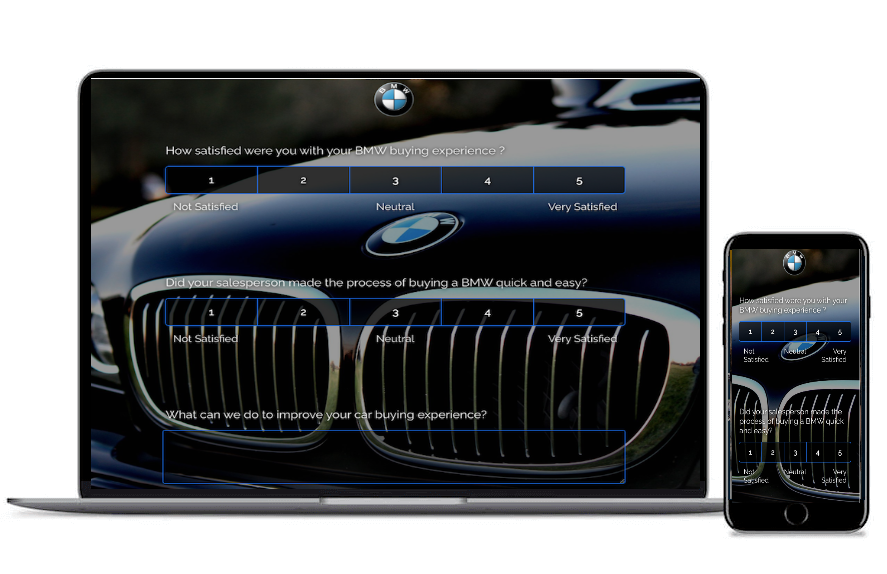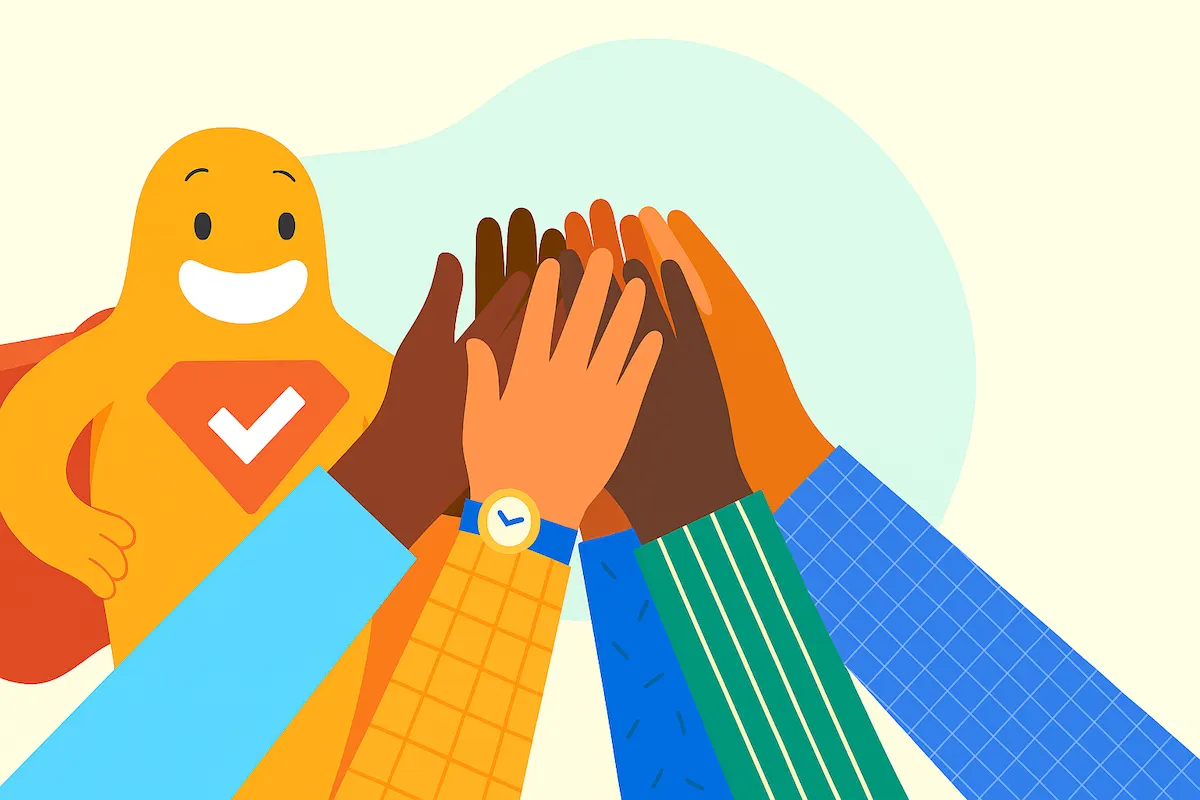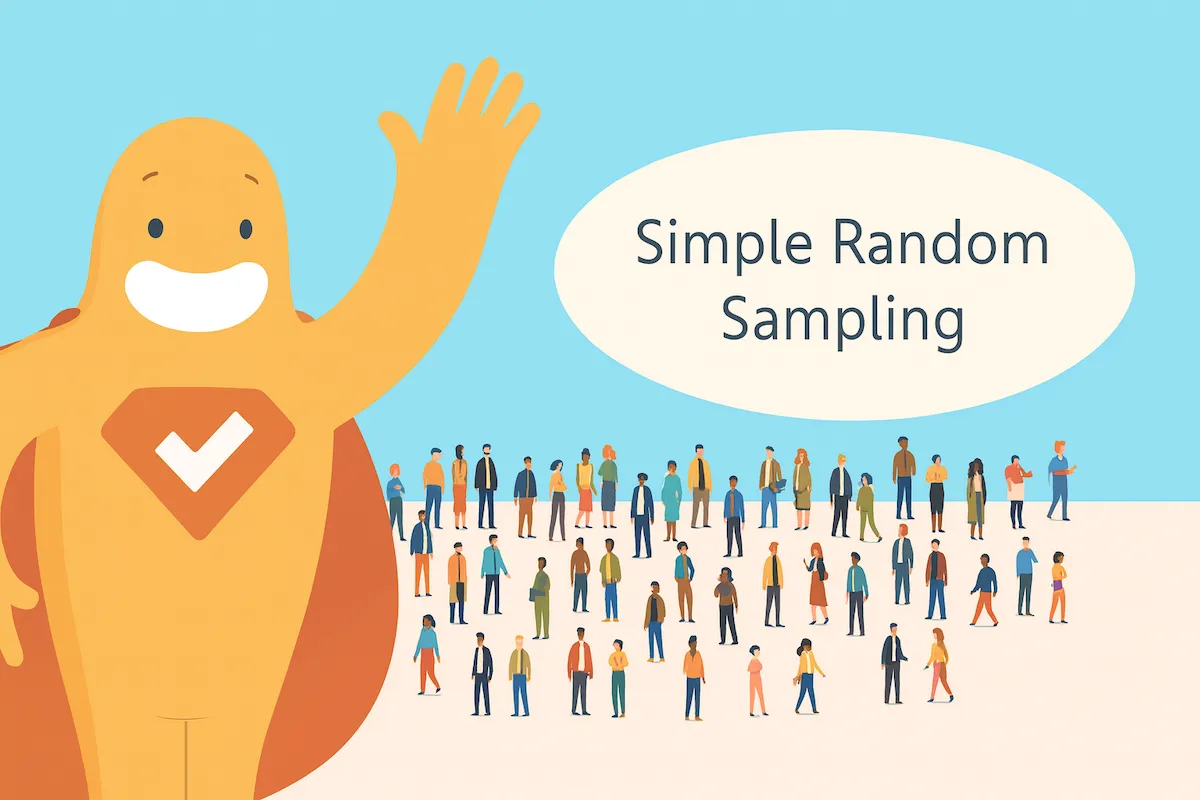We love our cars (and trucks, SUVs, and so on). According to Statista, approximately 75 million new cars are sold each year worldwide, with the United States accounting for about 17 million car sales. Because the purchase of a new car can be a big expense, dealers and sellers want to be sure they’re providing good customer service. To do that, it helps to understand the car buying journey.
Create your free car buying survey, form, poll, or questionnaire now!
What is the Car Buying Journey?
The latest Cox Automotive Buyer Journey Study reveals that most consumers are happy with their car buying experience. The report notes that most frustrations were due to a lack of inventory and high prices. However, 75% of vehicle buyers in 2021 noted they were highly satisfied with the dealership experience. So what is the car buying journey, exactly – and how does a customer car buying survey work?
Car shoppers go through a number of stages in the buyer cycle called the “Car Buying Journey.” This leads to making the final purchase. Car buying has changed over the years, however, with the advent of the internet; according to Google, a car shopper can have about 900+ digital interactions between the research and the final purchase. This means that car dealerships need to ensure they are using every digital touchpoint to attract and influence buyers.
Stage 1: Awareness
A lot of consumers are unsure of what they’re looking for – and many new car buyers just need a new ride. So, they go online to find something that fits within their budget and meets their needs (safety features, technology, mileage, and so on).
Approximately 95% of car shoppers use the internet to first gather information. During their research, they will look at various makes and models in different budget brackets. They may also look at the following:
- Blogs
- Videos
- Comparison sites
- E-books
- Social media posts
This shows that it’s important for dealerships to provide online information that can help potential customers navigate through the car buying journey. Offering detailed information regarding vehicles they may be interested in is also important to help them make an informed decision.
Understanding the importance of online vehicle research, many dealerships now offer 360-degree videos that put the shopper in the driver’s seat virtually. Check out some of these virtual car tours here.
A few tips for creating a good virtual test drive include:
- Using high-quality and clean car images
- Displaying multiple car angles for a better perspective
- Using 360-degree interior and exterior spin videos for immersive experiences
- Including a video of someone driving the vehicle
Stage 2: Consideration
Following their research, most car buyers will go further in determining the best deals and the options available. This is when they collect any and all information about the vehicles they may be considering. During this phase, car dealerships and car sellers can leverage digital media to position them for success and influence a customer’s buying decision.
However, at this stage, many customers have already decided to visit a dealership or seller offering the vehicle they’ve researched. They may have a lot of questions, and if they’ve done their research in stage one, they will be pretty knowledgeable. So, it goes without saying that salespeople should be just as current on vehicle prices, amenities, and offerings to not be caught off-guard.
Stage 3: Decision
This is the last stage and when the car buying journey comes to an end. At this point, the buyer has decided on a vehicle and is ready to make a purchase. Of course, he or she may still be considering where and how to buy the car and more than half of the shoppers prefer to buy from a dealership that offers their preferred experience, even if the prices are higher.
Also important to note is that buyers don’t want any kind of hassle or have to wait for hours at the dealership to complete the paperwork. In fact, more than 70% of buyers like to complete credit applications and financing paperwork online. So, it’s important to make the buying process stress-free and as simple as can be. We have a lot of content about improving your customer experiences here, plus 25 great customer experience resources.
A Non-Linear Car Buying Journey
The linear car buying journey probably makes a lot of sense. However, this approach to car retail may not be lasting (the pandemic, of course, has a role in this). To address this shift, car dealers and sellers need to break from their “sales funnel” mindset, stop hard selling and develop a culture that prioritizes customer experiences delivered by knowledgeable product experts.
Look no further than Apple. A consumer can have equally engaging product experiences whether interacting with online touchpoints or visiting an Apple store. A shopper can also be confident that, whether they wish to discover new Apple products, consider them, buy them, or access post-purchase support, they can do this online, in-person, or a blend of both, safe in the knowledge that they won’t be penalized for choosing one touchpoint over another. Check out this story on Apple’s customer experience and how it can be applied to any industry.
Surveying Customers Throughout the Car Buying Journey
An important aspect of the car buying journey we have not discussed is the need to survey car buyers throughout their journey. This gives dealerships and car sellers more insight into how they’re performing and whether they’re meeting the needs and expectations of customers.
Car buying surveys can be conducted at any point in the car buying journey. For example:
- Surveying customers directly on your website through pop-up surveys
- Asking visitors to your dealership or business to complete a kiosk survey
- Emailing follow-up surveys to buyers and non-buyers asking about the experience
When developing a survey, we always recommend a visual survey. Surveys with photos are more engaging, leading to higher response rates and better data. Take a look at our blog on the 7 Benefits of Using Picture Survey and then view a car buying survey example below.
Conclusion
Although we’ve identified the three steps of the car buying journey, all paths to purchase may not be linear. That’s why it’s important to survey customers throughout their car buying journey. You may ask them how useful they felt your website was, how helpful their salesperson was, and how happy they are with their purchase.
To create great visual surveys, which allow you to brand them and even change the visual of the car, get started with SurveyLegend. With SurveyLegend, images can be resized at your discretion, complementing questions or answers, or creating beautiful backgrounds. Of course, you’re also not limited in the types of image polls and image-based surveys you can create! You can use imagery to create clickable image polls, multiple-choice selections, ranking surveys with emojis, and more. So, begin reeling in car buyers and more accurate data with our free survey maker.
Do you regularly use a car buying survey? Do you survey car buyers throughout their journey? We’d love to hear from you in the comments and we’d love to help you survey car buyers with our free online surveys.
Create your free car buying survey, form, poll, or questionnaire now!
Frequently Asked Questions (FAQs)
The car buyer’s journey is the thought process a consumer goes through before making a purchase. The car buying journey can be more complicated compared to other purchases due to the expense involved.
For many people, a car is the most expensive thing that they own. For people that own their house, it’s the second most expensive thing that they own. Because of this, they put a lot of thought into vehicle purchases. Car buying experience surveys confirm the importance of vehicles to people.
There’s a lot of competition for car buying today. Using a car buying experience survey, sellers can get a better understanding of the needs and wants of consumers, and discover areas of improvement.




